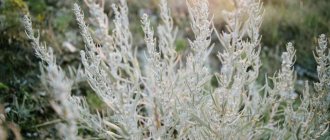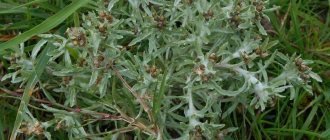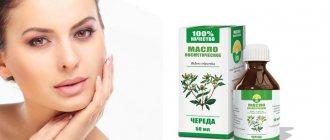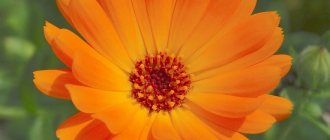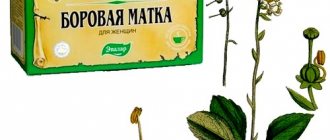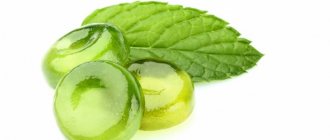Peppermint is a popular and widespread herbaceous plant with a specific odor from the Lamiaceae family. The cultivated species was obtained by hybridizing wild varieties of garden and watermint.
The plant is cultivated by gardeners everywhere, and is also grown on an industrial scale, especially in the Voronezh region and Krasnodar Territory. It is a valuable honey plant - the resulting honey has a pleasant mint aroma and an impeccable amber color. Prefers marshy areas, but is generally unpretentious to soil and germination conditions. Some gardeners consider the plant a weed.
The medicinal properties and contraindications of peppermint have been sufficiently studied for a long time. As a result, the plant is actively used in industrial pharmaceuticals and folk medicine, and is also used for deodorizing rooms, clothing and shoes, in cooking, perfumery, the food industry, etc.
Morphological description
The rhizome is horizontal, branched, with fibrous thin roots. The stem is straight, from 30 to 100 cm in height, hollow inside, and has 4 sides. The plant is characterized by a large number of lateral branches and leaves. The leaves are opposite, arranged crosswise, have an oblong-ovate shape and short petioles. The tips of the leaves are pointed, the base is heart-shaped and has a sharp-serrated edge.
The flowers are small in size, light purple in color, collected at the top in half-whorls, from which spike-shaped inflorescences are formed. Flowering occurs in the summer, from June to September. The fruit consists of 4 nuts and is formed quite rarely.
AUTHENTICITY
External signs
Whole raw materials. Various shaped pieces of leaves, stems, and, less commonly, flowers and buds, 10 mm or more in size.
When examined under a magnifying glass (10×) or a stereomicroscope (16×), the following are visible: fragments of leaf blades (some retain a serrated edge with uneven sharp teeth), petioles, and rarely elements of a calyx and corolla. On the surface of the leaf blades and calyxes, numerous rounded shiny glands from golden yellow to dark brown are visible; slightly pressed whitish hairs are visible along the veins below. There are few hairs on the stems; glands are very rare.
Leaf color ranges from light green to dark green; stems - from green to dark green or greenish-brown, greenish-violet; buds and flowers with calyxes ranging from light green to greenish brown and corollas ranging from pale purple to brownish purple. The smell is strong, aromatic. The taste of the water extract is burning and cooling.
Crushed raw materials. A mixture of pieces of leaves, stems, and rarely flowers and buds, passing through a sieve with 5 mm holes.
When examined under a magnifying glass (10×) or a stereomicroscope (16×), the following are visible: fragments of leaf blades, petioles, and less commonly, elements of the calyx and corolla. Numerous rounded shiny glands from golden yellow to dark brown are visible on the surface of the leaf blade; slightly pressed whitish hairs may be located along the veins below. On stem fragments there are few hairs, glands are very rare.
Color ranges from light green to dark green or greenish-brown with greenish-violet, grayish-white, yellowish-white, brownish-white, pale violet, brownish-violet, violet, black inclusions. The smell is strong, aromatic. The taste of the water extract is burning and cooling.
Powder. A mixture of pieces of leaves, stems, and rarely flowers and buds, passing through a sieve with 2 mm holes.
When examined under a magnifying glass (10×) or a stereomicroscope (16×), the following are visible: fragments of leaf blades, petioles, stems; elements of the calyx and corolla are less common. Numerous rounded shiny glands from golden yellow to dark brown are visible on the surface of the leaf blade; slightly pressed whitish hairs may be located along the veins below. On stem fragments there are few hairs, glands are very rare.
Color ranges from light green to dark green or greenish-brown with greenish-violet, grayish-white, yellowish-white, brownish-white, pale violet, brownish-violet, dark brown, violet, black inclusions. The smell is strong, aromatic. The taste of the water extract is burning and cooling.
Microscopic signs
Whole raw materials, crushed raw materials. When examining micropreparations of a leaf from the surface, epidermal cells with highly convoluted walls and stomata with 2 parastomatal cells located perpendicular to the longitudinal axis of the stomata (diacitic type) are visible on the upper and lower sides. Possible presence of simple 2-4 cell hairs with a warty cuticle, mainly along the veins and along the edge of the leaf. Over the entire surface there are small capitate hairs, consisting of a short unicellular stalk and a unicellular obovate head. Essential oil glands are visible in small depressions on both sides of the leaf; they have a short stalk and a rounded head, consisting of 8, rarely 6 radially located excretory cells (not always clearly visible). When examining the sepals and corolla from the surface, epidermal cells with highly convoluted walls are visible; the epidermis of the petals has a folded cuticle, and the cells of the inner epidermis have papillary projections. The stomata are sparse, diacite type, located on the outer side of the sepals. On the surface of the sepals and corolla, and along the edge of the sepals, hairs and glands are visible, the same as on the leaves.
When examining a crushed preparation of the stem, rectangular elongated epidermal cells with straight walls are visible; on the surface there are simple capitate hairs and essential oil glands, characteristic of mint leaves; mechanical fibers; vessels of the ladder and spiral type.
Powder. When examining micropreparations, one can see: fragments of a leaf with an epidermis of cells with highly convoluted walls and diacite-type stomata. On some fragments there are 2-4-cell warty simple hairs; over the entire surface there are small capitate hairs, consisting of a short unicellular stalk and a unicellular obovate head, round essential oil glands of a yellowish-brown color, consisting of 8, less often 6 excretory cells located radially ; the glands are often crushed. Sometimes there are fragments of tissues of petioles, sepals, and rarely of the corolla, bearing diagnostic features characteristic of a given object (hairs, glands), individual multicellular hairs, which are often deformed, and their fragments.
Procurement and storage of raw materials
The aerial part has medicinal value. For self-harvesting, mint leaves are most suitable, which should be collected in dry weather at the beginning of flowering.
The raw materials are dried in air, in the shade. If leaves are collected, they are dried on clean paper, if branches are collected, they can be dried with awnings. Mint dries well and quickly, after which it is placed for storage in cardboard boxes. The shelf life of dry raw materials is 2 years.
The raw materials should be crushed immediately before preparing the medicine, but not in advance, so as not to lose valuable essential oil.
Which is better: fresh or brewed dried herb leaves?
During the drying process of mint, some of its cells are destroyed, and the loss of moisture from the leaves entails a decrease in the concentration of vitamins. Even with the maximum adherence to technology in industrial production conditions, the plant retains no more than 40% of these elements. The mineral composition of dried herbs remains virtually unchanged.
Read here what methods of harvesting mint for the winter exist.
Chemical composition of peppermint
The well-known smell of mint is nothing more than an essential oil, which the plant is very rich in. Oil is a transparent liquid with a greenish or yellowish tint, a pleasant fresh taste and aroma. The content of essential oil varies in different parts of the plant: leaves contain 2.5-4.5% essential oil, inflorescences - 4-6% liquid, and stems - up to 0.3%. The more favorable the growing conditions, the greater the amount of essential oil the plant contains. The composition of the essential oil is represented by menthol, menthol esters (valeric and acetic acids), alpha-pinene, pulegone, cineole, dipentene, beta-phellandrene and other terpenoids.
Fresh leaves also contain tannins and resins, organic acids, betaine, carotene, trace elements, hesperidin, bitterness, vitamins, neutral saponins, glucose and other substances.
So, 100 grams of fresh leaves of the plant contain:
- 70 kilocalories;
- 78.7 gr. water;
- 14.9 gr. carbohydrates;
- 8 gr. fiber;
- 3.8 gr. proteins;
- 0.9 gr. fats;
- 0.2 gr. saturated fatty acids;
- 570 mg potassium;
- 80 mg magnesium;
- 30 mg sodium;
- 75 mg phosphorus;
- 243 mg calcium;
- 5 mg iron;
- 30 mg vit. WITH;
- 1.7 mg vit. AT 3;
- 0.3 mg vit. B2 and B5;
- 0.1 mg vit. B1 and B6.
Composition, active ingredients and calorie content
Chemical composition:
- vitamins A, C, group B;
- minerals:
- calcium;
- magnesium;
- iron;
- potassium;
- phosphorus;
- manganese;
- sodium;
- copper;
- zinc.
- flavonoids;
- tannins;
- amino acids.
100 g of product contains:
- proteins – 3.7 g;
- carbohydrates – 8 g;
- fats – 0.4 g.
Calorie content – 49 kcal.
Read about the beneficial properties of birch leaves here.
Medicinal properties of mint
The plant is used for a number of diseases. A huge contribution to the study of the properties of mint was once made by the British, who, through a series of experiments, discovered the effect of menthol on the human body. Upon contact with skin or mucous membranes, menthol causes irritation of cold receptors, stimulates the narrowing of superficially located vessels and the reflex dilation of blood vessels that nourish internal organs. It is this effect and a mild local anesthetic effect that is used in the relief of angina attacks (the well-known drug validol).
Mint preparations have the following therapeutic effects:
- soothing;
- vasodilator;
- sedative;
- painkiller;
- antiemetic;
- antiseptic;
- anti-inflammatory;
- improves digestion and appetite;
- antispasmodic;
- carminative;
- diuretic;
- choleretic;
- anticancer.
The scope of mint is wide - it is used to treat diseases:
- viral and bacterial nature, occurring as acute respiratory infections: tonsillitis, pharyngitis, bronchitis, bronchospasm, rhinitis, as well as tuberculosis;
- cardiovascular system: hypertension, angina pectoris, circulatory failure, coronary vascular spasm. Also used for heart palpitations;
- nervous system: insomnia, depression, nervous agitation, stress, migraines, decreased attention and memory;
- digestive system: nausea, vomiting, spasmodic pain, colic, flatulence, poor appetite, hepatitis, gastritis, incl. caused by H. Pylori, cystitis, cholecystitis, salmonellosis, cholelithiasis, urolithiasis, irritable bowel syndrome, helminthic infestation, oral diseases;
- skin and mucous membranes: itching, rash, including herpetic nature, dermatitis, burns, acne, pimples, dandruff, insect bites, sweating, increased oily skin, enlarged pores and wrinkles;
- female genitalia: heavy menstruation, manifestations of menopause;
- pain syndrome: toothache and headache, spasm of smooth muscles, myalgia, bruises, sprains, neuralgia.
For preventive purposes, the anti-carcinogenic effect of mint is actively used, especially pronounced in the prevention of cancer of the skin, colon, pancreas, liver, lungs, breast and prostate gland.
Plant preparations are used to improve the functioning of the immune system. Mint increases the resistance of body cells to long-term exposure to small doses of radiation, so it can be used in parallel with the course of treatment for cancer, as well as in cases of living in unfavorable radiological conditions.
What does it treat?
Due to its properties and rich composition, mint is used in the treatment of the following pathological processes:
- cardiovascular diseases;
- liver and kidney diseases (cholecystitis, hepatitis, cholelithiasis, etc.);
- digestive disorders, pathologies of the gastrointestinal tract, stomach pain;
- colds, cough;
- nausea, belching;
- increased gas formation;
- asthmatic attacks (in the absence of contraindications);
- sleep disturbances, increased anxiety, stress;
- respiratory tract diseases (pneumonia, bronchitis, etc.);
- inflammation, acne and other skin problems;
- increased body weight;
- menopause, painful menstruation;
- gynecological pathologies in women;
- acute headache or toothache.
Contraindications to the use of mint
- Gastric achlorhydria;
- Increased acidity of gastric juice;
- Individual intolerance to plant drugs;
- Severe allergic reactions, including to food;
- Phlebeurysm;
- Hypotension;
- Infertility, reduced ability to conceive, both in women and men;
- Severe weakness, adynamia, drowsiness;
- Children's age is up to 3 years, and for dosage forms with a high menthol content - up to 6 years.
Folk remedies for weight loss
The herb is recommended for use as part of a diet, due to its many positive properties that are important for weight loss, namely:
- increased gastric peristalsis;
- stimulation of metabolism;
- prevention of fermentation and putrefactive processes;
- antispasmodic effect on intestinal smooth muscles;
- reducing the production of the hormone cortisone, which promotes the accumulation of visceral fat.
When losing weight, smoothies or tea are prepared using mint.
In addition, wraps are periodically performed using this plant. Such procedures contribute to irritation of thermoreceptors.
Use for women during pregnancy and lactation
If there are no contraindications and the doctor allows the use of mint preparations, they can be used to combat the nausea that accompanies toxicosis. But mint during pregnancy should be taken in very small doses, since pregnant women often develop allergic reactions to various plants.
It is believed that mint in small quantities improves lactation, and in large quantities it suppresses it, so in moderate quantities it can also be used by nursing mothers, again, if the attending physician and pediatrician allow it. You should also ask your doctor how much mint you can drink.
Mint in cosmetology
Peppermint oil helps stimulate hair growth and improves its condition. This component is often present in shampoos, masks and body care products. The plant helps eliminate dandruff, reduces irritation and reduces oily hair.
To stimulate blood circulation, it is enough to periodically rub a small amount of mint oil into the root area. It is considered an excellent moisturizer, helps relieve itching, and helps fight acne and pimples. To prepare your own healing decoction for hair at home, take 300 g of herbs and pour 1 liter of boiling water. The healing mixture is kept on fire for 30 minutes and used to rinse hair.
A therapeutic bath to relieve fatigue, tension and prevent joint diseases is prepared so that for every 8 liters of water there is 50 g of mint. Instead of herbs, you can use oil; adding a few drops is enough.
Medicinal forms of mint and their uses
Infusion of mint leaves
Alcohol and water tincture is used:
- To prepare a water infusion, 1 tbsp. dry mint is poured with boiling water (200 ml) and left in a thermos for 60 minutes, filtered. Take a sip 3-4 times a day to treat gastrointestinal diseases, digestive disorders, colds, coughs, and to relieve heart pain. When treating diseases of the nervous system, take 100 ml three times a day so that the last dose is before bedtime. Externally used in cosmetology to improve complexion, eliminate fine wrinkles, increased oily skin and enlarged pores.
- To obtain an alcohol setting, 1 part of the dry raw material is mixed with 5 parts of vodka and kept in the dark for 14 days. Used for rubbing for certain skin diseases and migraines (rubbed on temples). Take orally diluted with water, 10-15 drops twice or thrice a day. – to relieve pain, for women’s problems (heavy menstruation, menopause), for preventive purposes.
Mint decoction
1 tbsp. dry raw materials, pour 500 ml of water and cook over low heat for 15 minutes and infuse for another 15 minutes, filter. Drink 100 ml with the addition of honey (1 tsp) for nausea, rapid heartbeat, and bad breath.
- For dermatoses, add a decoction to the bath, but make it more concentrated (50 grams of herb ~ 10 liters of bath water).
- Mint decoction for hair is used as a final rinse after washing - it gets rid of excess oil, strengthens the hair roots and adds shine to the hair.
Tea with mint
The most popular medicinal form of the plant is mint tea, the benefits and harms of which have long been studied. To prepare tea, take both dried and fresh leaves in a volume of 2 tbsp. and fill them with 1 liter. boiling water in a kettle.
It should be understood that mint tea is medicinal and should not be consumed like regular black or green tea. The optimal dose for adults is 100 ml 2-3 times a day, for a child – 50 ml with the same frequency.
It is used in the treatment of colitis, spasms and pain of the gastrointestinal tract, nausea, flatulence, to improve digestion and appetite, as a choleretic drug. It helps well with colds, neuroses and chronic fatigue. Prescribed for rinsing the mouth, throat and nose. Used for respiratory diseases - bronchitis, pharyngitis, rhinitis for inhalation.
Peppermint oil
It is difficult to obtain this dosage form yourself, so you should buy ready-made oil at the pharmacy. For internal use, 2-4 drops are dripped onto a piece of sugar and dissolved. It has a therapeutic effect for diseases of the heart, lungs, liver and gallbladder, nervous system, headaches, flatulence, and helps to recover after a long illness.
Externally used for spot application on acne, insect bites, temples (for headaches), joints (for joint pain), throat and chest to alleviate colds, muscle projection (for myalgia).
Mint drops
To obtain them, you need to take medical alcohol of 90% strength, mint oil and dry mint leaves. For 1 part of raw material, take 20 parts of alcohol, leave for 1 day, periodically shaking the contents. At the end, add 1 part of mint oil. Take 10 drops 2 times a day with water for digestive disorders such as cramps, nausea, flatulence, diarrhea.
Baths
For a foot bath, pour 50 grams of leaves into 1000 ml of boiling water and leave for 30 minutes under the lid. When warm, pour it into a basin and place your feet there for 15 minutes. Recommended for excessive sweating of feet, at night.
Methods for harvesting mint
Drying mint
Mint harvesting begins in June, after flowering begins, and continues until the end of July. It is best to collect mint bushes in the morning (after the dew has dried) or in the evening (from sunset to the dew), since high humidity can negatively affect the drying process.
Dirty and damaged leaves should be removed from the total mass, and the collection should be washed and dried thoroughly with a paper towel. Drying itself can be done naturally (in the fresh air) or accelerated (in the oven or microwave).
To dry naturally, the stems are tied into bunches and hung with the leaves down in a dark, dry place with good air circulation. Direct sunlight should be avoided when drying. Processing time is 2 to 3 weeks. As soon as the leaves begin to be easily removed from the stems, drying stops.
Drying in an open oven takes place at a temperature of no more than 75 degrees (at higher temperatures, the leaves lose all their beneficial qualities) for about 15–20 minutes. To prevent the leaves from drying out on the baking sheet, you need to cover it with parchment paper.
Dried mint can be stored for 1–1.5 years. To prevent it from losing its taste, you must use an airtight container made of glass, metal or plastic.
Freezing mint
Freezing mint allows you to preserve its taste and beneficial properties for a long period. For proper freezing, it is necessary to use fresh leaves without damage or stains. The leaves are placed in a bag or cling film, then sent to the freezer.
Mint syrup
Mint syrup is an excellent substitute for fresh leaves when added to tea, coffee and alcoholic beverages, and is also an ingredient in many confectionery products.
To prepare 200 g of syrup you need: 100 g of mint leaves, 250 g of sugar, a pinch of citric acid, 70 g of water.
Coarsely chop the mint, add 125 g of sugar and add citric acid. Leave for 8–10 hours for the leaves to release their juice. Pour 125 g of sugar with water, bring to a boil over low heat and simmer for 4-5 minutes until the sugar is completely dissolved. Pour the mint with the resulting syrup and leave to cool for 5-6 hours, then boil for about 5 minutes, strain through a fine sieve and pour into a pre-sterilized jar, as shown in the video.
-35%
70 rub. 107 rub.
Green tea Richard Royal Green, 25 bags
0 reviews
-61%
332 rub. 850 rub.
Green tea JustMont “Matcha Green Japanese”, powder, 50 g
3 reviews
-25%
73 rub. 97 rub.
Curtis “Hugo Cocktail” green tea with additives, 20 pyramids
4 reviews
-25%
73 rub. 97 rub.
Curtis “Fresh Mojito” tea, green flavored, 20 pyramids
4 reviews
-25%
73 rub. 97 rub.
Curtis "Delicate Mango" green tea with additives, 20 pyramids
3 reviews
100 rub.
Ahmad Blueberry Breeze tea, green with blueberries, 25 bags
3 reviews
-25%
73 rub. 97 rub.
Curtis Bahama Nights Green Tea with Additives, 20 Pyramids
3 reviews
Large selection of green tea at TEA.RU
Pharmaceuticals
- Mint herb – used for preparing teas and infusions;
- Packaged mint tea, indicated for the conditions described above;
- Peppermint oil and menthol. They are sold in the form of independent dosage forms in bottles with a dispenser, and are also included in such drugs as Corvalol, Doctor Mom lozenges, Fitolor, Validol, Zelenin drops, Gevkamen, Menovazin, etc.
- Mint tablets that help with vomiting, nausea, gastrointestinal spasms;
- Dental drops, dental elixir.
Areas of use
Mint is a useful product that is used in various fields:
- Medicine. The essential oil and extract of this medicinal plant are components of throat lozenges and various mixtures. Mint is included in most herbal teas due to its healing properties.
- Cooking. Most often, the plant is added to various desserts and cocktails, and tea is made from it. Culinary uses of mint: It is a key component of oriental cuisine; fresh leaves are used to decorate cakes and pastries; the plant is a natural coloring and flavoring agent; adds piquancy to meat; helps to increase the shelf life of food products.
- Cosmetology. Due to its antiseptic properties, mint is used to combat acne, inflammation and other skin rashes. Mint extract is a key component of cosmetic products to combat dermatological imperfections. The plant perfectly tones the skin and at the same time soothes it. Mint is also used for rejuvenation, as it smoothes the skin and cleanses it of toxins. It also promotes active hair growth, helps cope with dandruff and provides quality scalp care, which is why many masks and shampoos include this herbal product.
- Perfumery. Essential oil is present in many perfumes and eau de toilette.
- Weight loss. Mint helps you lose extra pounds because it reduces appetite due to the taste and smell of menthol in its composition. Drinking mint tea not only dulls the feeling of hunger, but also helps cleanse the body of toxins, which prevents the appearance of cellulite. To speed up your metabolism, you can take mint tea in combination with ginger.
Side effects
- Therapy with mint preparations may be accompanied by general lethargy and drowsiness, so such treatment excludes the possibility of driving a car and working with precision mechanisms, which require increased concentration.
- Another unpleasant side effect for men is a decrease in potency. However, such a reaction is rarely observed with long-term treatment in large doses and especially in those who already had problems with potency.
- It is believed that mint reduces the ability to conceive.
- People with hypersensitivity may develop allergic reactions such as rash, dermatitis, and itchy skin.
- Excessive consumption of mint causes heartburn.
Author:
Sabuk Tatyana Leonidovna hygienist, epidemiologist
